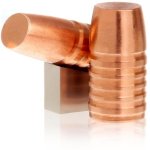was wondering what is your experience on stopping power with caliber and of course specific bullet.
so far i ve seen 460 wea with 510 or 500 grains solid and expandable on western savannah buffalo, lion and dwarf forest buffalo.
300 savage 180 grains core lockt on black bear.
35 whelen on our bison.
failures are more interesing:
6 shots on our bison with 375 hh and 260 grains nosler accubond.
3 shots of the same kind on another bison but this time a 9.3x62 320 grains rn woodleigh stopped it.
let s open the discussion
so far i ve seen 460 wea with 510 or 500 grains solid and expandable on western savannah buffalo, lion and dwarf forest buffalo.
300 savage 180 grains core lockt on black bear.
35 whelen on our bison.
failures are more interesing:
6 shots on our bison with 375 hh and 260 grains nosler accubond.
3 shots of the same kind on another bison but this time a 9.3x62 320 grains rn woodleigh stopped it.
let s open the discussion
Last edited:








































































